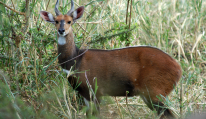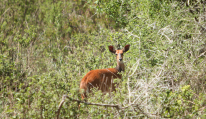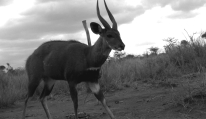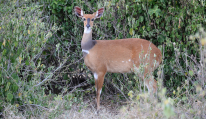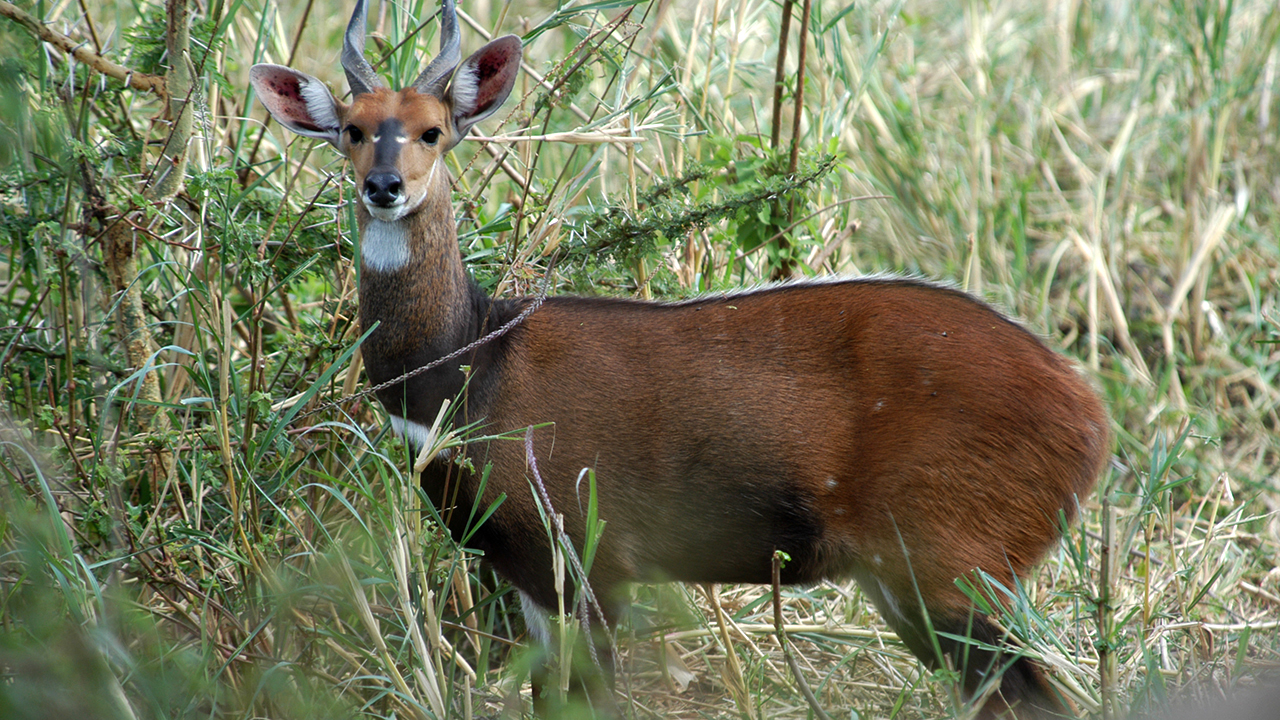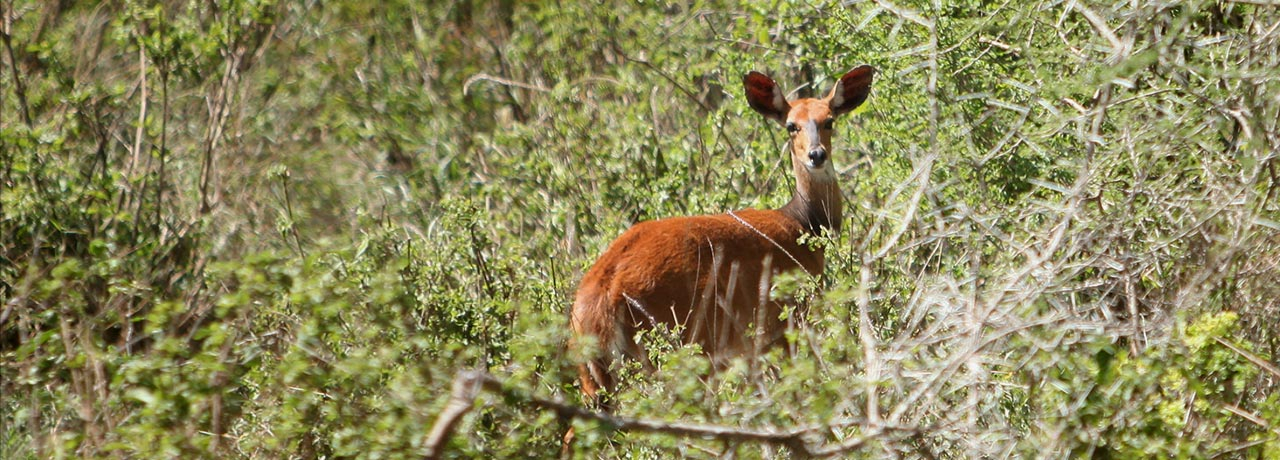Social Structure
Although bushbucks usually live alone, they occasionally spend time in pairs or even in small groups of adult females, adult females with young, or adult males. A unique social structure is exhibited by bushbucks In Uganda. There, female young remain with their mothers throughout their lives, and adult females organize themselves into matrilineal clans. Each related group maintains and defends a home range against unrelated females. Related females also engage in grooming and other social activities. Males leave their mother’s home range to join a bachelor herd when they are six months old, and fight other male groups to gain territory.
Communication
Bushbucks are solitary creatures that communicate mainly through scent-marking rather than vocalization, although they occasionally emit a bark to warn of danger. A male bushbuck signals a challenge to another male by adopting a rigid walk, raising his head, arching his back, and lifting his tail. If the opponent is an equal match, he takes up a similar posture and the two circle one another; if the opponent submits, he keeps his head low and licks the dominant male. Some researchers think males may bark to indicate their status to another bushbuck.
Behavior
Bushbucks spend most of their time eating, ruminating, resting, and moving. They are most active at dawn and dusk, though this varies based on season, age, and sex. Males are often combative. A male will first feign an attack by lowering his horns to the ground, but if he and his opponent are closely matched, they will lock horns and try to stab each other’s sides. While female bushbucks can be aggressive toward other females, they tend to fight much less than males. Bushbucks have a keen sense of smell. When either a male or a female senses a predator in the distance, they freeze and drop to the ground, keeping their head and neck against the earth until the danger passes. If the predator is close, a bushbuck will emit a bark and flee into the bush with its tail raised.
Conservation
Although there is no serious threat to bushbuck populations, some are being reduced by habitat destruction due to human activity. In some areas, habitats are being taken over by smaller species, particularly the common duiker, Their hides make bushbucks a target for hunters.

